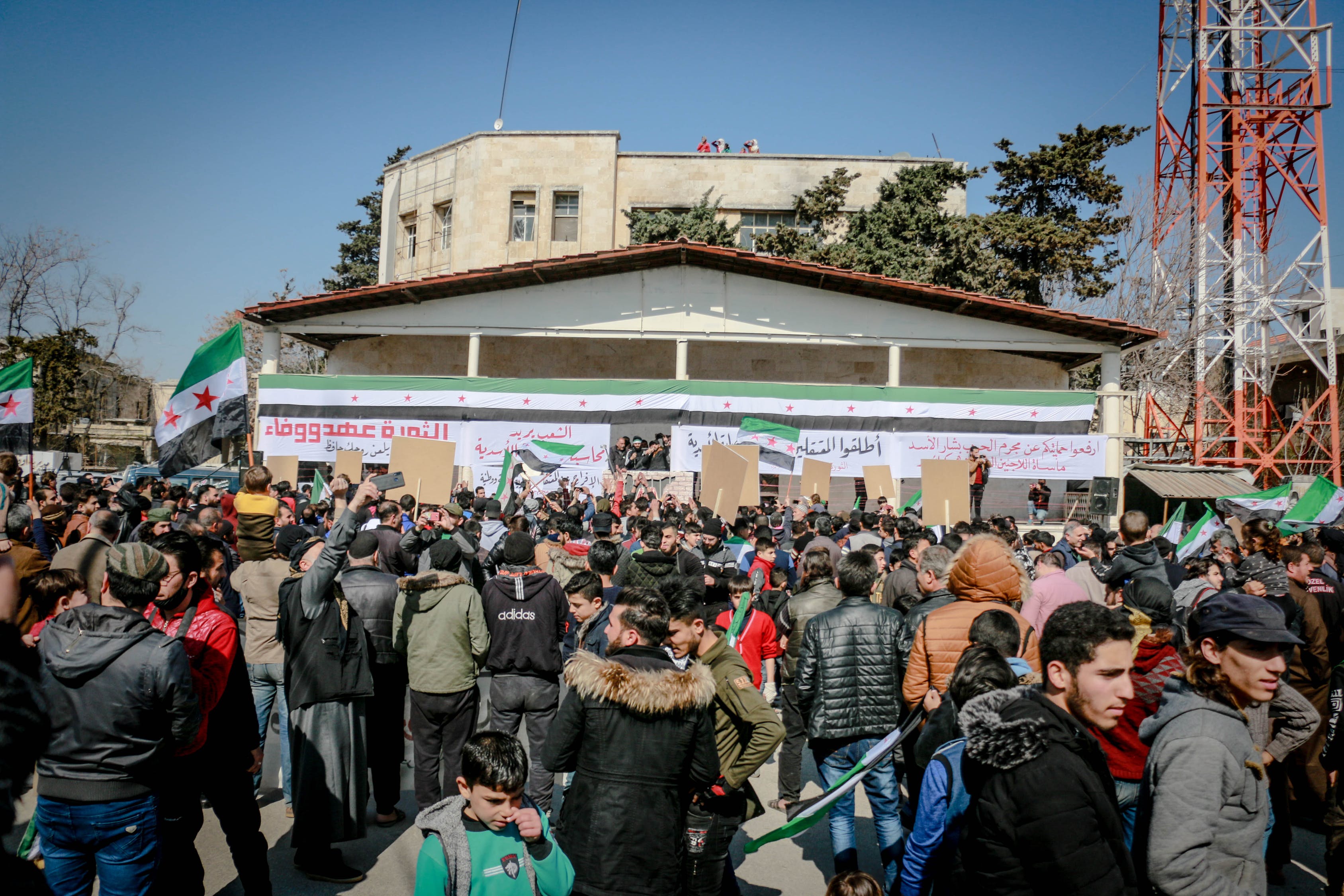Bellin, Eva. “Reconsidering the robustness of authoritarianism in the Middle East: Lessons from the Arab Spring.” Comparative Politics 44.2 (2012): 127-149.
This article primarily places the blame for the Syrian Civil War on the Assad Regime and their attempts to suppress protestors and those seeking change during the Arab Spring. While regimes in Libya and Egypt fell during this time, Syria’s authoritarian regime decided to stand fast against change rather than make concessions to protesters. The regime’s overestimation of its ability to shut down a resistance group led to the long and drawn-out civil war. The author of the paper is a professor from Brandeis University who studies democratization and authoritarianism. This article would ultimately be used to argue that the Assad regime’s uncompromising stance in the face of change led to the civil war. This stems from the fact that the government waited until they were in the midst of upheaval from several elements in their nation before taking action. Unlike Egypt and Libya, both of which experienced timely coups of their government, the result in Syria has been prolonged fighting that has blossomed into a civil war.

Carpenter, Ted Galen. “Tangled web: The syrian civil war and its implications.” Mediterranean Quarterly 24.1 (2013): 1-11.
This article argues that the Syrian Civil War was entirely caused by several complex factors that are independent of the dichotomy that is presented in the news. The article claims that the news is biased in terms of having an evil regime and noble freedom fighters. Yet, the truth is that there are several acting figures behind the international elements of the civil war. This article was written by Ted Carpenter, an individual who is a foreign policy and defense studies fellow at Cato Institute. He is an academic source who is highly critical of foreign intervention in the Middle East. Overall, this article will be used to examine the inherent complexities in assigning blame for the civil war. After all, the initial combat was between the Assad regime and rebel forces. Either side could have laid down their arms as the war grew. However, non-state actors and international elements have become enmeshed in the battles, resulting in difficulty showing which group is at fault for the ongoing nature of the war.
Cohen, Erez. “From Arab Spring to Economic Winter–examination of the relationship between politics and economics as evident in the syrian civil war during 2011-2015.” Journal of International Studies 9.1 (2016): 9-26.
The basis of this article making a connection between the Arab Spring in 2011 and the attempt to remove Syria’s Assad regime from power, an act that led to the civil war. Dr. Erez Cohen, the author of the paper, is a professor from Ariel University, lending credibility to his arguments since he is a specialist in Israel and Middle Eastern Studies. The article lends a great deal of credibility to the idea that the attempt at overthrowing the regime was based on economic realities as a major source, which is arguable. The Assad regime is part of a religious minority that has been granted favoritism with their rise to power. This has led to unfairness and poverty in the country, with very few opportunities for change occurring until the civil war began in earnest. However, this article would be capable of being used as a historical basis for the ongoing war because it draws comparisons between the war in Syria and the other simultaneous regime changes that swept through the area. This provides insight into the resentment towards the Assad regime and a reason as to why the war has been prolonged for so long.






